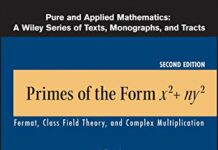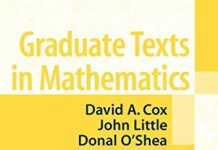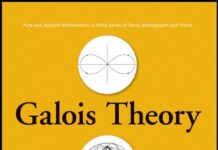
Ebook Info
- Published: 1999
- Number of pages: 469 pages
- Format: PDF
- File Size: 20.82 MB
- Authors: David A. Cox
Description
Mirror symmetry began when theoretical physicists made some astonishing predictions about rational curves on quintic hypersurfaces in four-dimensional projective space. Understanding the mathematics behind these predictions has been a substantial challenge. This book is the first completely comprehensive monograph on mirror symmetry, covering the original observations by the physicists through the most recent progress made to date. Subjects discussed include toric varieties, Hodge theory, Kähler geometry, moduli of stable maps, Calabi-Yau manifolds, quantum cohomology, Gromov-Witten invariants, and the mirror theorem.
User’s Reviews
Editorial Reviews: Review “As the authors observed, the greatest obstacle facing a mathematician who wants to learn about mirror symmetry is knowing where to start. Another problem is the scattering of many mathematical ideas throughout the physics literature, which is difficult for mathematicians to read. The present book seems to be a successful attempt to collect all these ideas. It could also be used as a starting reference for mathematicians interested in learning about mirror symmetry. It is especially very helpful for the reader that the authors have summarized in Appendix B some of the key points of physical theories mentioned in the book.” —- Bulletin of the AMS”Mathematicians wanting to get into the field will find it an essential book. They will find a very well written and encyclopaedic account of the mathematics which was needed in, and was developed from, what now might be termed classical mirror symmetry. We can be grateful to the authors for a book which not only summarizes current knowledge, but also points to the future.” —- Bulletin of the LMSFeatured Review: “The book is highly recommended for everyone who wants to learn about the fascinating recent interplay between physics and mathematics. It can serve as an introduction both for a mathematician who wants to learn about mirror symmetry, and for a physicist who knows about mirror symmetry and wants to understand the mathematics behind it. It even contains enough details to also be useful for the mathematician who actively wants to do research in the subject.” —- Mathematical Reviews
Reviews from Amazon users which were colected at the time this book was published on the website:
⭐This is a very specialized text focusing on the marriage of mirror symmetry – a powerful concept that arises in String Theory – and the language of Algebraic Geometry. The book motivates the subject with an introduction to the Physics wherein such questions arise, and therefore keeps things in prespective.
⭐This book is one of the few monographs on mirror symmetry that is not a collection of articles written by specialists. It attempts to put mirror symmetry on a mathematically rigorous foundation and does so to a large degree. The book opens with a review of the motivations for mirror symmetry in quantum field theory and superstring theory. The content of this chapter is straightforward reading for physicists/string theorists but mathematicians may have trouble with the physical reasoning employed. The chapter explains the motivation for the mathematical constructions performed in the rest of the book. The author does a good job of presenting the mathematics in a form that is as rigorous as possible. The predictions made by physicists to quantities in in algebraic geometry are too interesting from a mathematical standpoint to let lay couched in the formalism of path integrals. The book gives many examples of mirror symmetry constructions that are rigorous mathematically, most of these involving toric varieties. A general methodology for finding the mirror of a given Calabi-Yau manifold is still unknown according to the author. By far the best chapter in the book is the one on quantum cohomology, as this tool has so many applications in algebraic and symplectic geometry. One is always impressed on the originality and breadth of ideas that have been employed in this subject. There are several topics in mirror symmetry that are not discussed in the book, but even with these omissions, this is a fine addition to the literature on the subject. One question that immediately arises when thinking about mirror symmetry is there is anything that is interesting in the case of Calabi-Yau manifolds over finite fields. The special case that comes to mind is for elliptic curves. Are mirrors of Calabi-Yau manifolds easier to find in the finite field case and does the mirror have a group operation related to the one on the original manifold (elliptic curve)? These questions are not addressed in this book, but answering them may have important ramifications for applications of mirror symmetry to the field of cryptography for example.
⭐The authors talk about an important aspect of mathematics, the mirror symmetry. Here they explicate the duality between two space. They can be Kahler, Fano, Calabi-Yau. So we apply those results to quantum physics.
Keywords
Free Download Mirror Symmetry and Algebraic Geometry (Mathematical Surveys and Monographs) in PDF format
Mirror Symmetry and Algebraic Geometry (Mathematical Surveys and Monographs) PDF Free Download
Download Mirror Symmetry and Algebraic Geometry (Mathematical Surveys and Monographs) 1999 PDF Free
Mirror Symmetry and Algebraic Geometry (Mathematical Surveys and Monographs) 1999 PDF Free Download
Download Mirror Symmetry and Algebraic Geometry (Mathematical Surveys and Monographs) PDF
Free Download Ebook Mirror Symmetry and Algebraic Geometry (Mathematical Surveys and Monographs)


